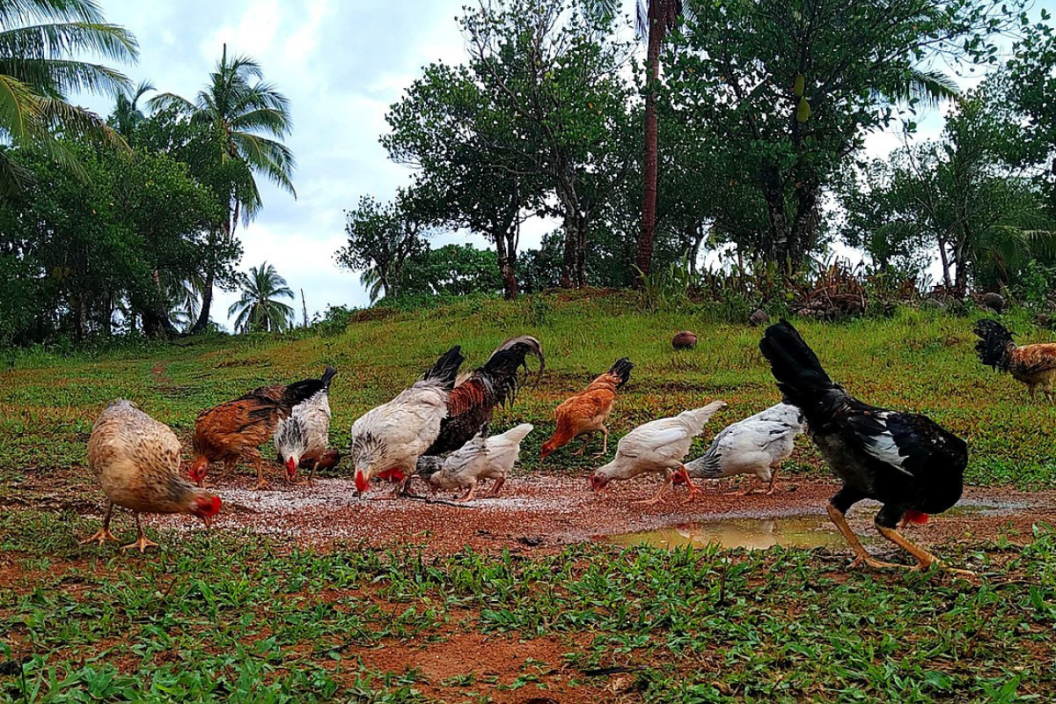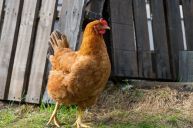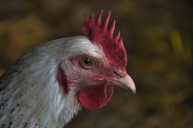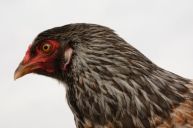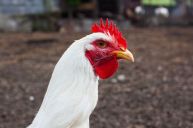Whether it's the sweet and docile Dominique or the intelligent white Leghorn, any of these different breeds of chicken will make a great addition to your backyard flock.
Whether you are planning to get chickens or already have your backyard flock, take a look at our list of the 15 most popular breeds of chickens for beginner backyard chicken owners. These breeds are not only popular, but many are recommended breeds for new chicken owners for reasons varying from laying a good number of eggs to ease of care and personality.
It's important to carefully consider breeds and your circumstances when selecting your flock. Rural or urban flock location, a hot or cold climate, the size of your chicken coop and backyard, and how friendly you expect your chickens to be are all factors to consider in choosing chicken breeds.
No matter what breed or breeds you choose for egg production, you'll discover the joy of a raising pet chickens and a productive pet flock that produces fresh eggs for breakfast.
15 Breeds of Chickens To Add to Your Flock
1. Australorp
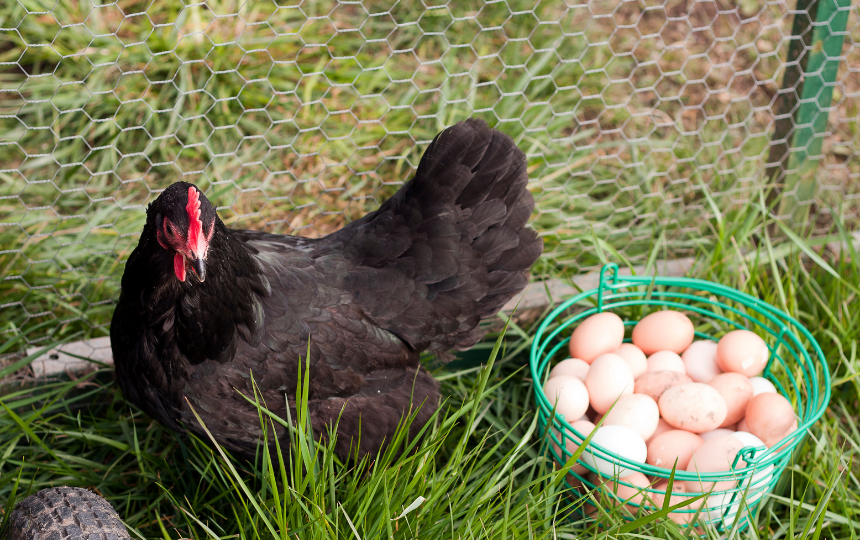
Australorp chickens are a great choice for any flock owner. They are dual-purpose birds (useful for both eggs and meat), friendly, and hail from Australia. The Australorp is an excellent layer and very hardy. Australorps lay about 250 large brown eggs a year and are available in black, white, or blue. They are good foragers as well as good layers. You cannot go wrong with the popular and easy to care for Australorp.
2. Orpington
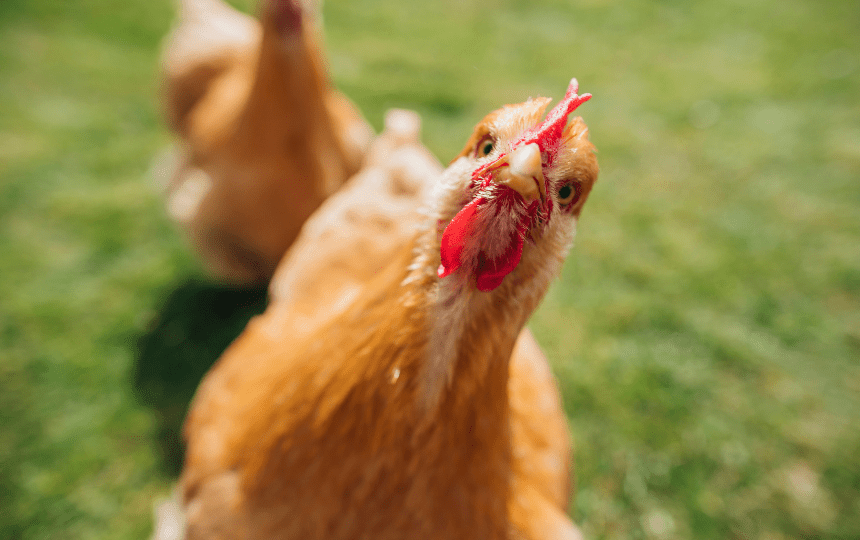
Orpington chickens are fluffy, friendly, and beautiful. A dual-purpose breed, they are quite hardy, and come in many colors (blue, lavender, buff, black, and white). Orpingtons lay about 200 light brown eggs a year. Buff Orpingtons are a wonderful shade of gold. One thing to keep in mind is that the lighter colors of white or buff Orpington chickens may make them easier targets for predators.
3. Easter Egger
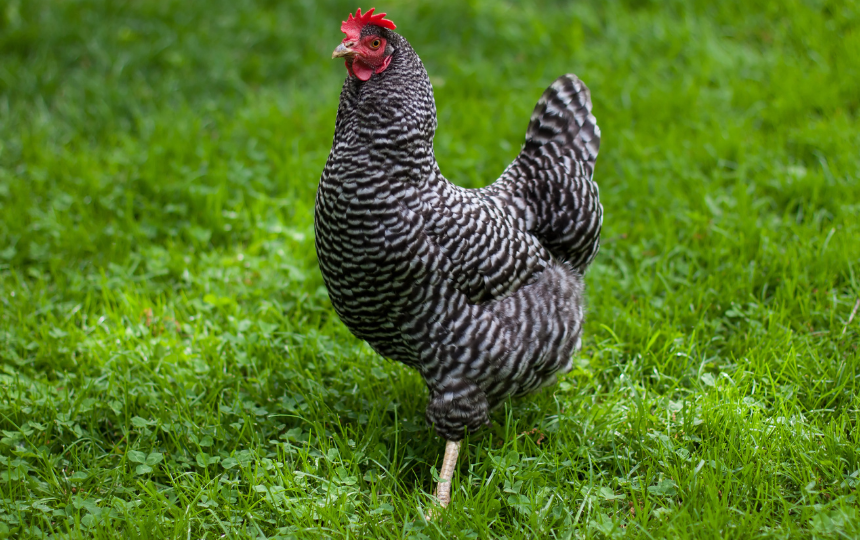
Easter Egger chickens lay very colorful green, blue, or pink eggs. They are not really a breed, but a chicken that lays colored eggs and doesn't conform to breed standards for Ameraucana or Araucana chickens. Easter Eggers are charming and colorful hybrids. They vary widely in appearance, and they may have fluffy beards, ear muffs, or crests. Colorful egg laying chickens generally lay fewer eggs than other breeds.
4. Plymouth Rock
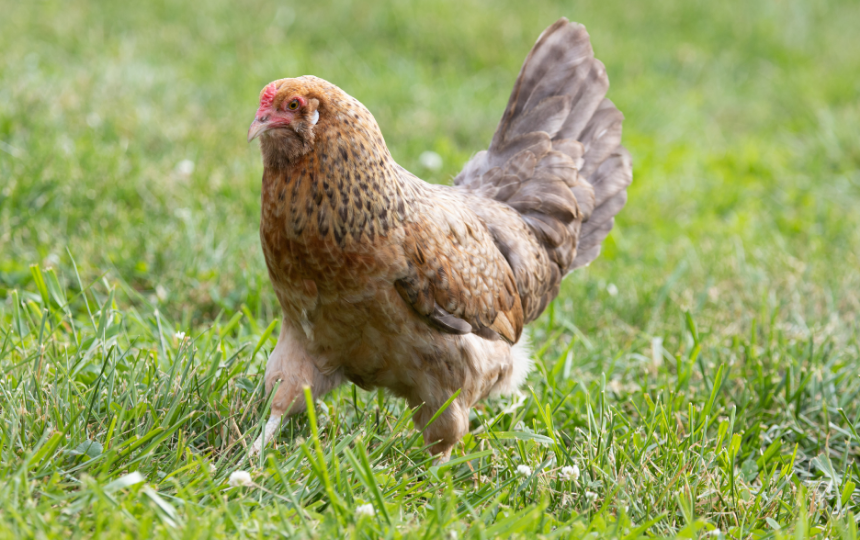
Plymouth Rock chickens are one of the most familiar dual-purpose heritage farm breeds, particularly the Barred Plymouth Rock. Barred, black frizzle, blue, partridge, buff, columbian, silver penciled, black, and white colors are available. They are calm, love to free-range, and are very hardy. They are good layers, with about 280 pinkish-brown eggs a year.
5. Sussex

Sussex chickens are dual-purpose inquisitive and sweet birds and lay about 250 eggs annually in varying shades of light brown. In the United States, the Speckled Sussex chicken is more popular than the red, buff columbian, brown, coronation, buff, silver, light, or white Sussex chicken.
6. Wyandotte
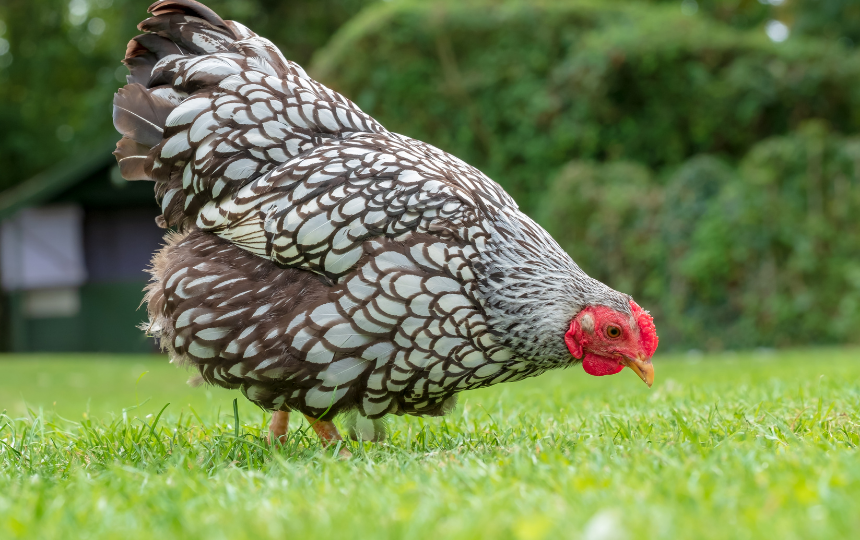
Wyandotte chickens have some beautiful laced color varieties (gold, blue, and silver). Wyandottes also come in many other colors. The Wyandotte is a dual-purpose breed and lays about 200 tan or brown eggs annually. They have a sweet and docile temperament.
7. Brahma

Brahma chickens are large, calm, and hardy chickens. Brahmas do well in cold or damp climates. They have feathered feet, and they lay about 150 brown eggs a year, but they were originally developed for meat production. Brahmas make excellent pets, and they are a popular breed in northern climates.
8. Jersey Giant
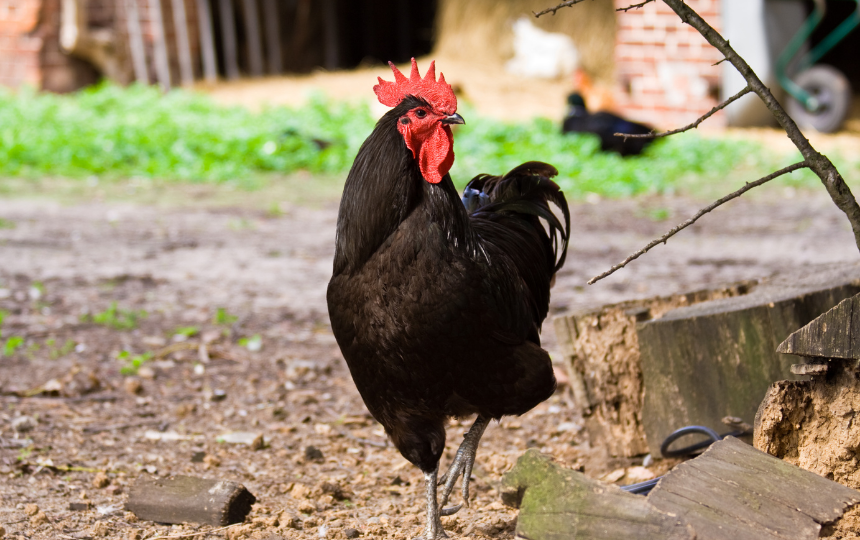
Jersey Giant chickens are, in fact, very large! These blue, black, and white giants are the largest of the pure breeds. Jersey Giants are dual-purpose chickens and lay about 260 brown eggs a year. They are calm, docile, and excellent for beginner flocks.
9. Leghorn
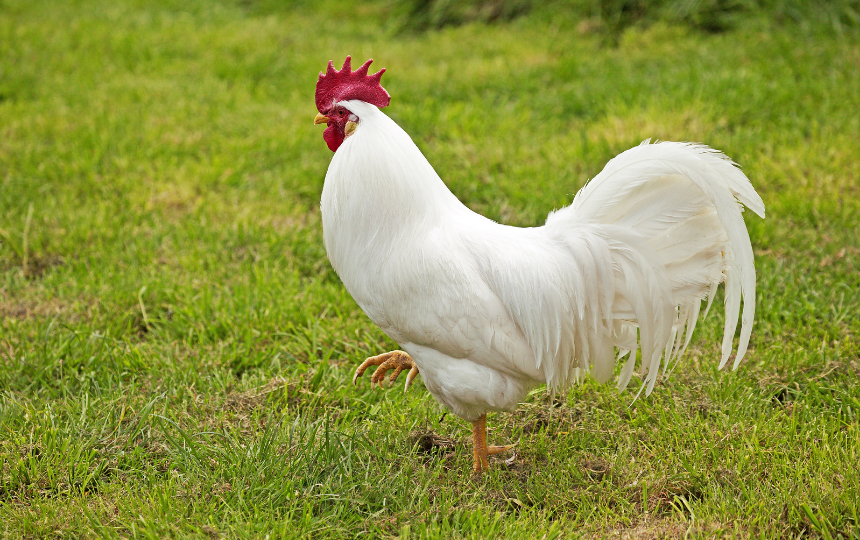
Leghorn chickens are productive layers (about 280 white eggs a year) and can be flighty, meaning they may startle easily and are not calm or docile. However, they are very productive egg layers and do particularly well in warmer climates due to their large comb (that can be either a single comb or a rose comb) and slight build.
While the white Leghorn is what usually comes to mind when people think of the chicken breed, they actually come in several different colors!
10. Star
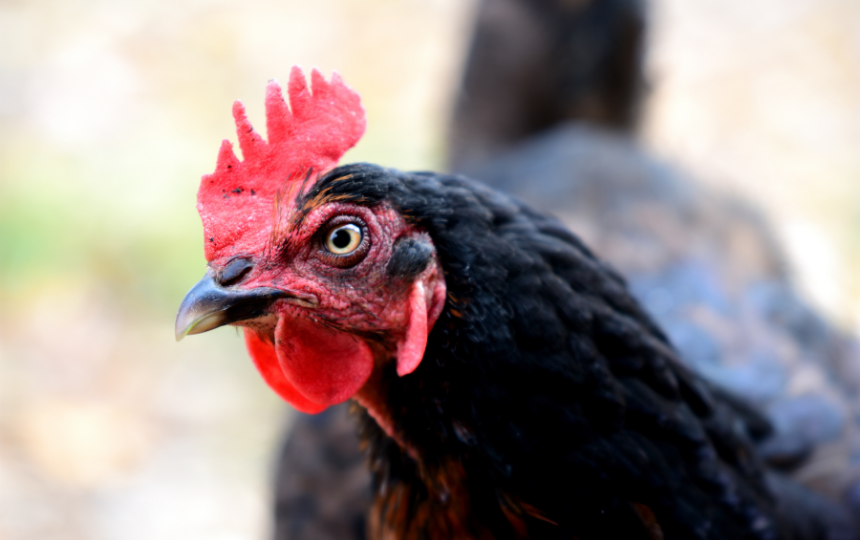
Also known as BlackStar and RedStar, Star chickens (or "sex-links") are not formally recognized breeds. They are popular productive hybrids. It is easy to tell whether a Star chick is male or female at hatch. Males and females have distinctive coloration differences at hatch. They lay about 260 brown eggs a year, are calm and docile, and are an excellent chicken breed for flock owners new and old.
11. Delaware
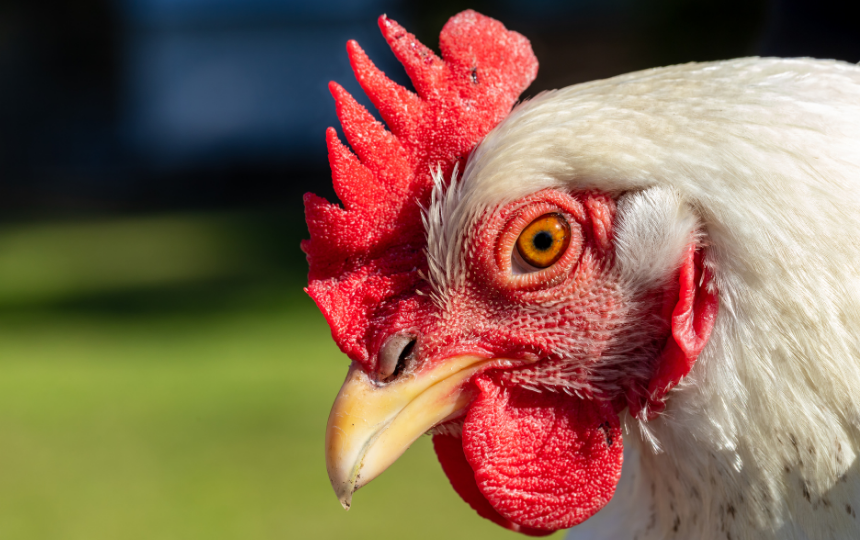
Do you want to have a rare breed? Delawares are a dual-purpose chicken, lay about 280 brown eggs a year, and have a calm temperament.
12. Rhode Island Reds
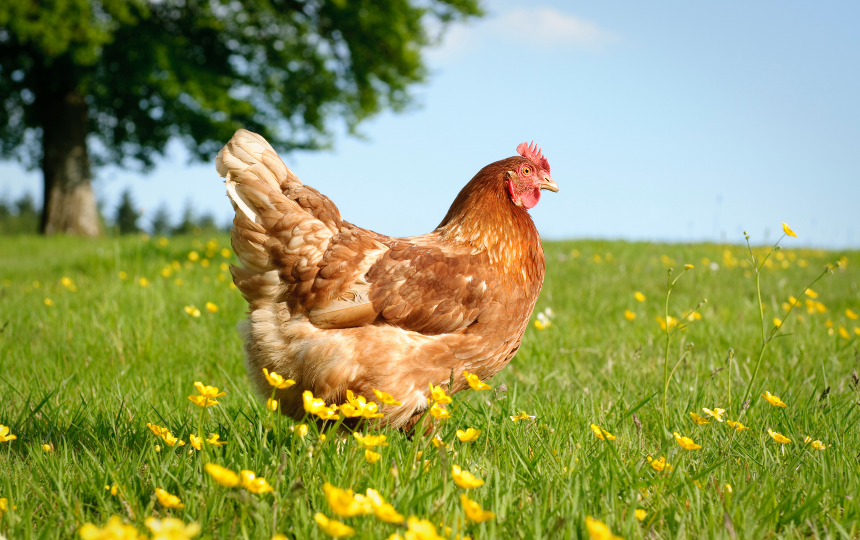
Rhode Island Reds (or RIR for short) are very popular. We do not recommend them for beginners because they have a reputation for bullying each other and bullying other breeds, but not all Rhode Island Reds are bullies.
13. Silkie
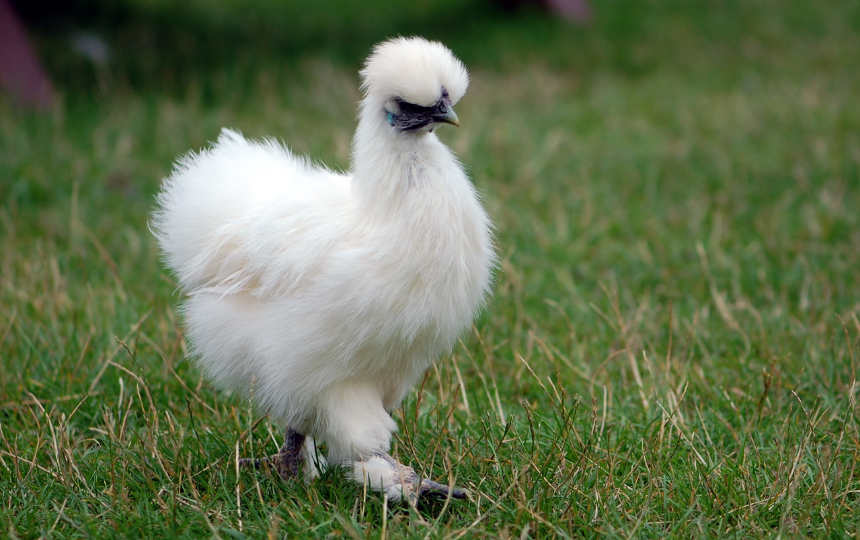
Silkie chickens are adorable and very popular. Silkies are the teddy bear of the chicken world. We do not recommend Silkies for beginners, particularly new backyard chicken owners with flocks of several breeds. Silkies are sometimes picked on and pushed around by bossier breeds and may need an experienced eye to watch out for them.
14. Polish
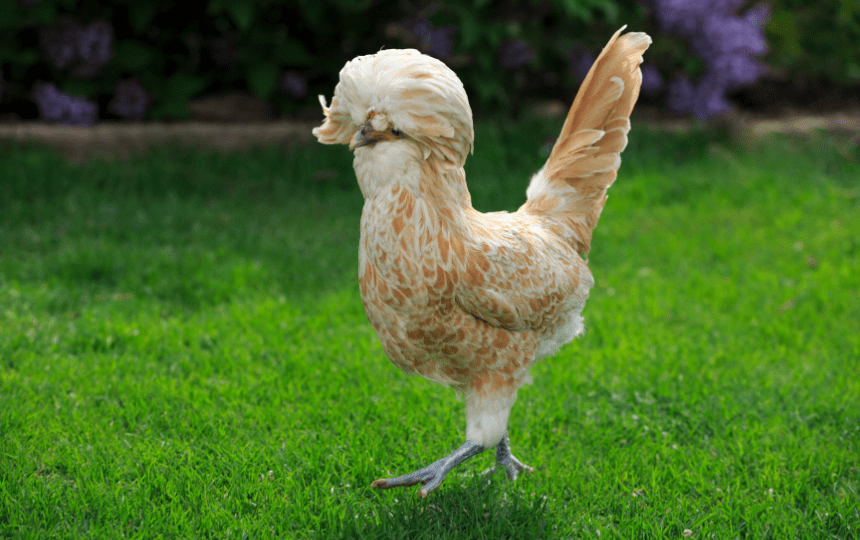
Polish chickens have a feathered crest. Polish chickens may get targeted by other breeds in your flock due to their unique appearance and inability to always see clearly through their feathers. Like Silkies, Polish chickens may need a more experienced flock owner to watch out for them and trim their crests when necessary so they can see.
15. Maran
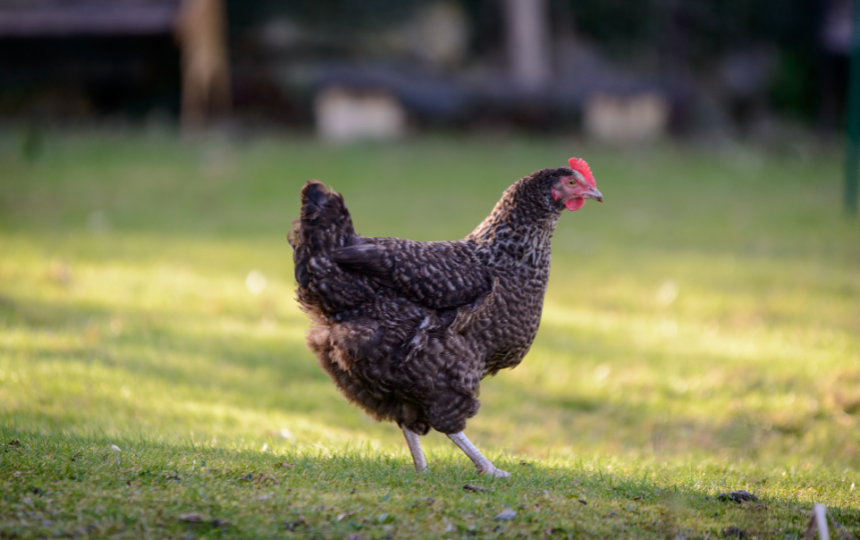
Maran chickens lay dark brown eggs. Named for a port town in France, this feisty breed was created from local chickens descended from fighting breeds. Marans aren't afraid to throw claws, which makes them not particularly well suited for beginners.
When choosing chicken breeds, you should always consider your climate and environment too. For example, do you need a chicken that can adapt to cold weather or is cold hardy? Do you want a chicken that lays blue eggs? What about a dual purpose breed (eggs and meat)?
Didn't see your chicken on the list? Let us know your breeds on the Wide Open Pets Facebook page!
This article was originally published May 28, 2019.
